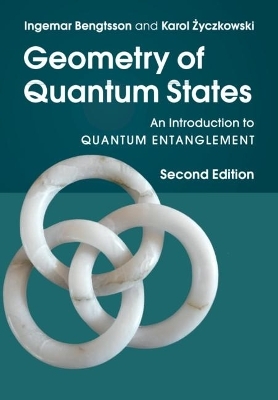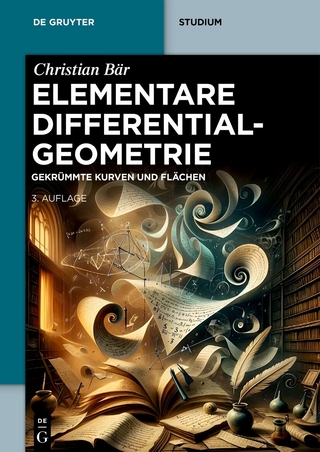
Geometry of Quantum States
Cambridge University Press (Verlag)
978-1-107-65614-7 (ISBN)
Quantum information theory is a branch of science at the frontier of physics, mathematics, and information science, and offers a variety of solutions that are impossible using classical theory. This book provides a detailed introduction to the key concepts used in processing quantum information and reveals that quantum mechanics is a generalisation of classical probability theory. The second edition contains new sections and entirely new chapters: the hot topic of multipartite entanglement; in-depth discussion of the discrete structures in finite dimensional Hilbert space, including unitary operator bases, mutually unbiased bases, symmetric informationally complete generalized measurements, discrete Wigner function, and unitary designs; the Gleason and Kochen–Specker theorems; the proof of the Lieb conjecture; the measure concentration phenomenon; and the Hastings' non-additivity theorem. This richly-illustrated book will be useful to a broad audience of graduates and researchers interested in quantum information theory. Exercises follow each chapter, with hints and answers supplied.
Ingemar Bengtsson is a professor of physics at Stockholms Universitet. After gaining a Ph.D. in Theoretical Physics from the Göteborgs universitet (1984), he held post-doctoral positions at CERN, Geneva, and the Imperial College of Science, Technology and Medicine, University of London. He returned to Göteborg in 1988 as a research assistant at Chalmers tekniska högskola, before taking up a position as Lecturer in Physics at Stockholms Universitet in 1993. He was appointed Professor of Physics in 2000. Professor Bengtsson is a member of the Swedish Physical Society and a former board member of its Divisions for Particle Physics and for Gravitation. His research interests are related to geometry, in the forms of classical general relativity and quantum theory. Karol Życzkowski is a professor at the Institute of Physics, Uniwersytet Jagiellonski, Kraków, Poland, and also at the Center for Theoretical Physics, Polska Akademia Nauk, Warsaw. He gained his Ph.D. and habilitation in theoretical physics at Uniwersytet Jagiellonski, and has followed this with a Humboldt Fellowship in Essen, a Fulbright Fellowship at the University of Maryland, College Park, and a visiting research position at the Perimeter Institute for Theoretical Physics, Ontario. He has been docent at the Academy of Sciences since 1999 and full professor at Uniwersytet Jagiellonski since 2004. Professor Życzkowski is a member of the Polish Physical Society and Academia Europaea. He works on quantum information, dynamical systems and chaos, quantum and statistical physics, applied mathematics, and theory of voting.
Preface; 1. Convexity, colours, and statistics; 2. Geometry of probability distributions; 3. Much ado about spheres; 4. Complex projective spaces; 5. Outline of quantum mechanics; 6. Coherent states and group actions; 7. The stellar representation; 8. The space of density matrices; 9. Purification of mixed quantum states; 10. Quantum operations; 11. Duality: maps versus states; 12. Discrete structures in Hilbert space; 13. Density matrices and entropies; 14. Distinguishability measures; 15. Monotone metrics and measures; 16. Quantum entanglement; 17. Multipartite entanglement; Appendix 1. Basic notions of differential geometry; Appendix 2. Basic notions of group theory; Appendix 3. Geometry – do it yourself; Appendix 4. Hints and answers to the exercises; Bibliography; Index.
| Erscheinungsdatum | 18.03.2020 |
|---|---|
| Zusatzinfo | 22 Tables, black and white; 32 Halftones, black and white; 107 Line drawings, black and white |
| Verlagsort | Cambridge |
| Sprache | englisch |
| Maße | 170 x 245 mm |
| Gewicht | 1050 g |
| Themenwelt | Mathematik / Informatik ► Mathematik ► Geometrie / Topologie |
| Naturwissenschaften ► Physik / Astronomie ► Quantenphysik | |
| ISBN-10 | 1-107-65614-1 / 1107656141 |
| ISBN-13 | 978-1-107-65614-7 / 9781107656147 |
| Zustand | Neuware |
| Haben Sie eine Frage zum Produkt? |
aus dem Bereich


